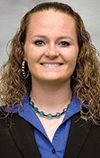Finding a way to meet those needs creates a niche market, which is exactly what the Bold Ranch in Winifred, Montana, strives to fill.
The ranch is owned by Robert and Annette Bold and features a diversified operation including breeding cattle, feeder cattle, dry-land crops including winter wheat, barley and dry-land hay, and hunting.
The ranch was started in 1979 and today has nearly 400 head of breeding females. The herd is primarily red and black Angus.
Their breeding cattle enterprise includes registered seedstock and commercial bulls, and their genetics help to improve Montana’s beef industry.
“The quickest way to improve any herd is through bulls or A.I. People don’t swap their female herd out here. They bring in outside genetics to change that herd and are focused on bulls of certain characteristics,” says Robert Bold.
They focus on a few key traits they believe will help ranchers succeed. “The main thing we focus on for our replacement females is structure.
That animal has to be able to handle rough ground, a foot of snow, heat, cold and wind. If you have the structure, that gives you the option of building a herd off that animal.
Structure has to be there before we can even look at secondary traits such as longevity and performance,” he says.
The next focus they have is on performance, including calving ease, milk and weaning weight. Performance for them also includes feed efficiency.
“Cattle performance and feed efficiency in the feedlot on the calves is important to us. Looking down the road, we look for bulls that have that feed-efficient trait in them. If you are keeping retained ownership, you find out how good they are,” Bold explains.
Feed efficiency is also important to video auctions buyers, which is very popular in Montana. “A lot of the time, the buyers in video auctions know from one year to the next the calves they got and how they performed,” he says.
Carcass traits are also important since the family retains ownership on their calves through their own feedlot. “We look to improve ribeye, marbling and other carcass traits.
When you are in the genetic area that we are, you start looking at those traits as well,” he says.
Their feedlot division is built off of these traits, which helps them meet the niche market their raise their cattle for. The majority of the cattle they raise end up in European markets, and their cattle are also eligible for Japanese export.
The cattle they raise are a part of the non-hormone treated cattle (NHTC) program. “We send boxed beef to Europe because they do not want cattle that have been treated.
We feed them out here, and then they are finished in Nebraska. Our feedlot is filled in the fall at weaning and empty by mid-June,” he explains.
They originally got into this market after hearing about it from a rancher in Kansas and decided they wanted to pursue the premium.
“The biggest advantage is the premium, but you do lose some of that premium since you have to feed them for an extra 30 days,” Bold states.
The last enterprise they feature is hunting and recreation. “We lease out the outfitting in. We participate in a special program called First Year Hunters, which is for kids who have just completed their hunter safety education.
They can come here with one parent or guardian, and they get to hunt for one week before the regular rifle season starts. It’s a neat program,” he says.
People enjoy hunting on the Bold Ranch because a lot of the public land in Montana is overrun or restricted, and there are no spring developments, according to Bold.
“The wildlife go to where the water and food sources are. The bulk of that public ground is not good hunting ground, so the wildlife go to private ground where they have those resources,” he explains.
Having a diversified operation helps the family to stay busy. “Grain farming is so seasonal, and nothing happens until spring thaw, and then we are done by the fall killing frost.
On the livestock side, things slow down for a cow-calf operator in the summer months, but we are busy in the spring with calving and in the fall and winter with weaning and feeding. It works out well for us,” Bold says.
Through all of their enterprises, the Bold family also focuses on taking care of the land and utilizing conservation practices.
They were one of the first farms in central Montana to adopt no-till conservation practices, and they use range management to keep their pastures in good condition. This has aided them during drought times and helps to sustain wildlife populations.
They also installed 59,000 feet of pipeline, and all of their pastures have multiple water tanks that are served from the gravity-fed pipeline.
“It helps makes us drought-immune. The last time we had a drought and people were having to liquidate their herds, we didn’t have to. It also really helps the wildlife throughout the year,” Bold states.
They have 400 acres they converted from a snow-white salty pasture to one that now grows grasses and legumes, and they use that area for wintering cattle. If there are ways the family finds to improve their ranch and the land, they pursue it.
The Bold family holds themselves to a high standard when it comes to taking care of everything they have been given. “We are stewards of the land.
If you look at it, you are only here for a certain period of time. There is a contract with you and God to be a steward and caretaker,” he says.
He adds, “The land was here before we got here and will be here after we are gone. We only have a short period of time, and so you do the best you can and leave it better than how you found it.” ![]()
Robyn Scherer is a freelance writer based in Colorado.







